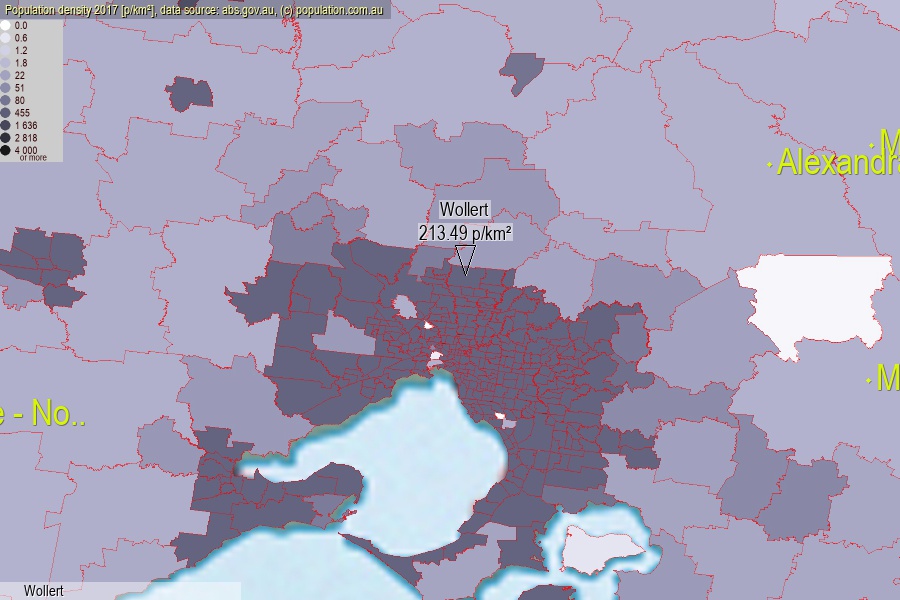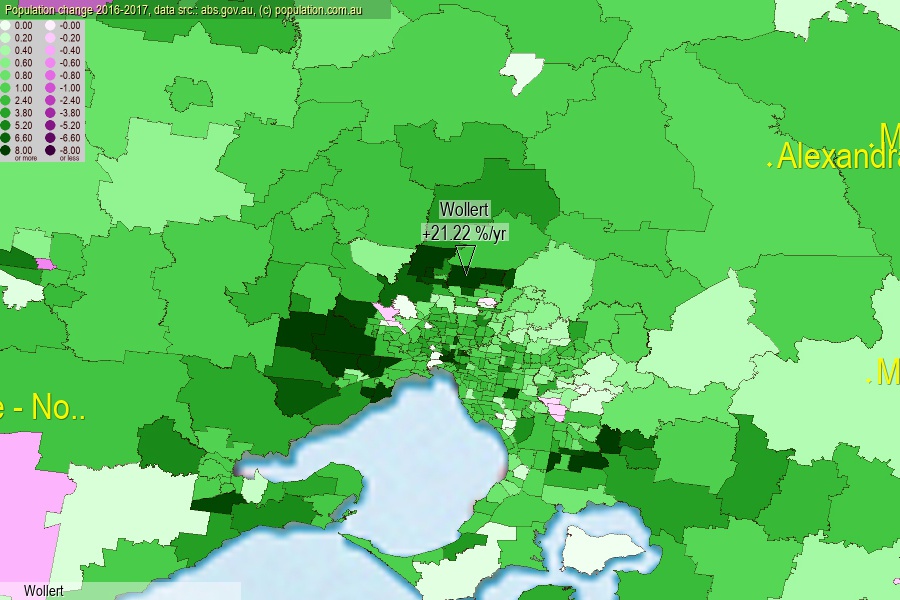 population.com.au
population.com.auLast official estimated population of Wollert (as Statistical Area Level 2) was 11 507 people (on 2017-06-30)[2]. This was 0.05% of total Australian population and 0.179% of VIC population. Area of Wollert is 53.90 km², in this year population density was 213.49 p/km² . If population growth rate would be same as in period 2016-2017 (+21.22%/yr), Wollert population in 2025 would be 53 633. [0]



Click to enlarge. Wollert is located in the center of the images.
Population [people], population density [p./km²] and population change [%/year] [2]
View borders » (new window) [4]
[2001-2002] -8.48 %/Yr.
[2002-2003] -5.06 %/Yr.
[2003-2004] +2.96 %/Yr.
[2004-2005] -7.18 %/Yr.
[2005-2006] +7.12 %/Yr.
[2006-2007] +2.60 %/Yr.
[2007-2008] +5.92 %/Yr.
[2008-2009] +11.17 %/Yr.
[2009-2010] +1.44 %/Yr.
[2010-2011] +24.53 %/Yr.
[2011-2012] +246.02 %/Yr.
[2012-2013] +85.39 %/Yr.
[2013-2014] +52.02 %/Yr.
[2014-2015] +39.91 %/Yr.
[2015-2016] +31.77 %/Yr.
[2016-2017] +21.22 %/Yr.
[0] Calculated with linear interpolation from officially estimated population
[1] Read more about SA2 and Australian Statistical Geography Standard (ASGS) on abs.gov.au
[2] Population data from Australian Bureau of Statistics (Population and density: 2017; change: 2016-2017)
[3] Digital Boundaries: Australian Statistical Geography Standard (ASGS) 2016.
[4] Border coordinates are simplifyed using Ramer-Douglas-Peucker algorithm.